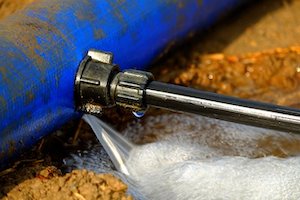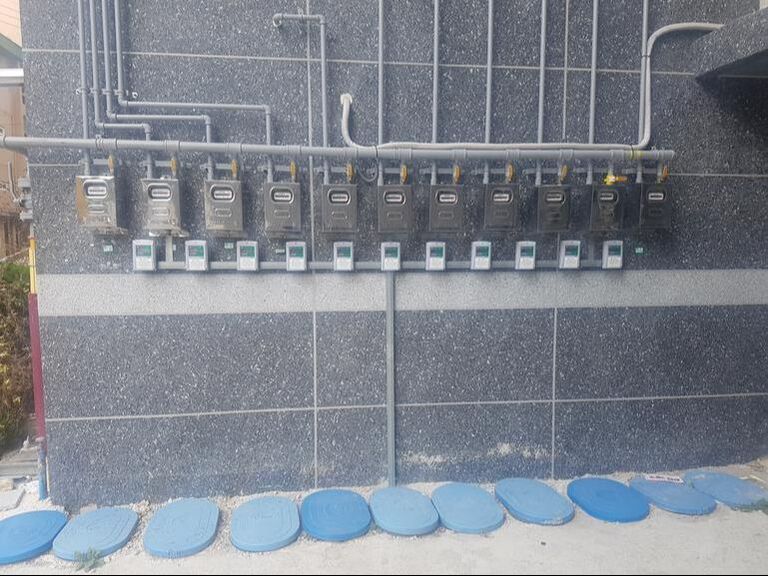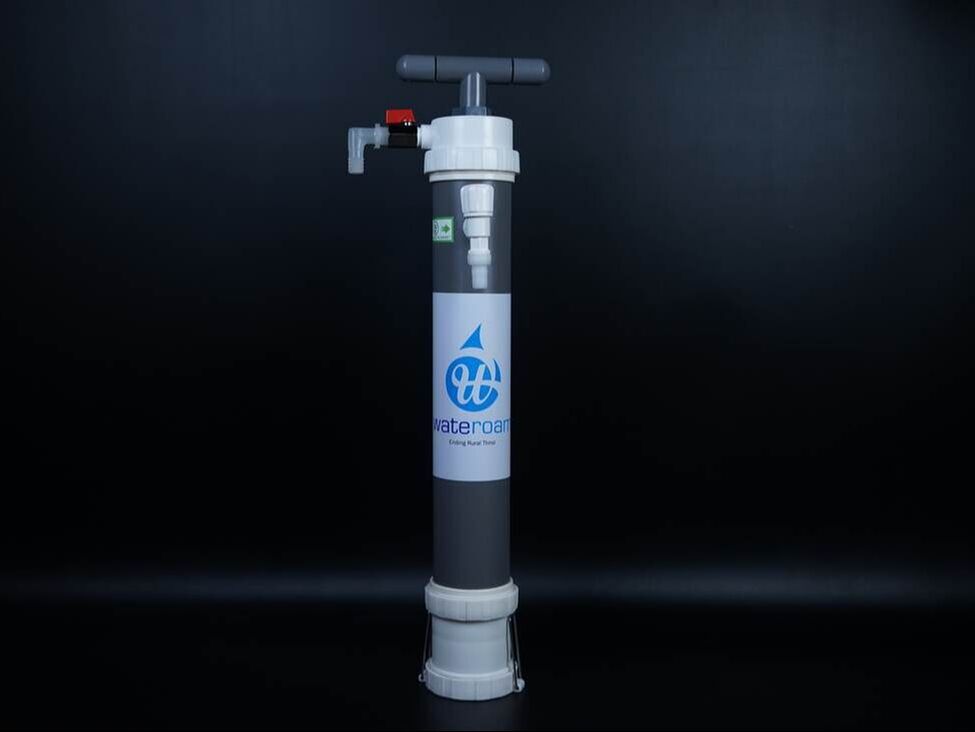|
Watch as two co-founders introduce our IoT plans after winning the DBSF x SIF Social Impact Award
In recent years, Internet-of-Things (IoT) has become an increasingly important form of technology that provides us with greater convenience in everyday life. By leveraging on low-cost computing, the cloud, big data, analytics and mobile technologies, physical devices can be connected to the internet to share and obtain data in real time with minimal human intervention. Ultimately, IoT technology is engineering a smarter, responsive world by merging the digital and physical universes.
If an object can be connected to the internet, communicate information, or be controlled from afar, the physical object is considered to be an IoT device. For instance, a lightbulb is considered an IoT device when it can be switched on using a smartphone app; this highlights perfectly how IoT defines devices that have the ability to communicate with a network without reliance on human resources, while still also being an object that is not expected to have internet connection. Unsurprisingly, IoT technology is expected to grow continuously as we are living in an era where there are more connected objects than people in the world. It’s predicted that by 2025 there will be a total of 41.6 billion connected IoT devices. By the same year (2025), half of the global population is estimated to live in water-stressed areas (WHO). The world is increasingly vulnerable towards the scarcity of clean drinking water, therefore, we at Wateroam, are aiming to combat this issue by offering a more sustainable and innovative water filtration system through the incorporation of IoT technology. Today, we’re going to share about the intersection of IoT technology and water management to highlight existing flaws within water systems, introduce innovative solutions that leverage on IoT, and share some product development updates involving the ROAMfilter Plus
Non-revenue water Non-revenue water refers to the loss of water which leads to the loss of potential revenue for water utility companies. This is an issue due to leakages and broken pipes, likely a result of outdated infrastructure or poor maintenance. A study by the World Bank found that the world loses 32 billion cubic meters of physical water yearly due to this, with half of the losses occurring in developing countries. If the water losses in developing countries could be reduced, that saved water supply could serve around 90 million people.  Image from Pixabay.com Image from Pixabay.com
The significant amount of water leakages emphasizes the importance of managing water supplies more efficiently as precious water resources should not be wasted due to poor maintenance. As we strive to help vulnerable communities obtain access to clean drinking water, we recognize the significant consequences for families having to prioritize water when supplies are limited. You can read more about that here in our past blog.
Smart Water in South Korea
In South Korea, Gochang Waterworks partnered with an Australian-based IoT company called Freestyle Technology. The partnership resulted in the installation of IoT-enabled smart water meters in 24,104 households in Gochang county. The implementation of smart water meters allowed the utility to conduct remote monitoring of water usage without relying on employees to embark on monthly home visits. The outcome of the project showed improvement in the accuracy of usage-based data for billing and it also prevented more extensive damage from leakages which in turn, reduced the costs from leakages by 19%.
Moreover, the implementation of the system goes beyond providing convenience as it also presents social benefits. Unintentionally, the deployment of the new meters has increased the safety of residents – especially the elderly. It provides the utility company with an ability to inform relatives or welfare homes to check in on households and residents without water usage in case an injury or incident has unknowingly occurred. This showcases an unintended benefit of how such technological advancements can serve vulnerable groups and socially marginalized people.
 Image from Bitlanders.com Image from Bitlanders.com
Traditional methods for water quality testing
Over the years, the quality of water has been deteriorating due to the rapid pace of industrialization, the vast development of the agricultural sector, agricultural fertilizers and weak law enforcements to prevent pollution. The presence of these pollutants jeopardize the safety and quality of water, restricting socio-economic development and causing individuals to be victims of preventable water-related illness.
Unarguably, constant monitoring of water quality is of paramount importance to prevent the outbreak of water-borne diseases and improve the quality of life for vulnerable communities.
Traditionally, the process of determining water quality is performed manually using either portable test kits, diagnostic instruments, or laboratory testing. When using the latter, samples must be procured and sent to the laboratories for analysis. This is a time-consuming and expensive process that requires human resources and an available laboratory. This traditional method does not offer real-time data which poses a challenge within itself as water composition could have changed since the samples were obtained. In a rural area, it could take days for transportation alone and then weeks to obtain the results; by then, the water source itself could have changed. While laboratory testing offers a comprehensive understanding of the water conditions at the time the sample was taken, it cannot offer consistent updates and real-time data on water quality.
Smart Water Quality Monitoring System in Fiji
Based on a report published by the University of South Pacific, obtaining real-time information on water quality is possible through their Smart Water Quality Monitoring (WQM) system. Ultimately, this device helps to monitor seawater quality in the Pacific Islands of Fiji by using IoT and remote sensing technologies. The system measures a range of water parameters such as: Potential Hydrogen (pH), Oxidation and Reduction Potential (ORP) as well as Conductivity and Temperature using remote sensing technology. With the aid of IoT technology, users will be alerted when there is a string of anomalous readings which could indicate the presence of potential pollutants.
What’s next for Wateroam?
Seeing the various benefits of the Internet of Things, we believe we are capable of impacting even more lives by enhancing our ROAMfilter Plus through the utilization of IoT technology. This innovation will allow us to provide solutions to some of the various challenges faced in disaster-affected and rural locations. IoT technology will allow us to obtain real-time data on the quality and quantity of water that has been filtered through our systems, keeping us regularly informed on its level of performance. For instance, multiple water filters could be deployed across a widespread geographic region by NGOs, charities or governments that do not have a headquarters in the area. As a result, it would take hours or even days of travelling time to reach the locations of deployment to monitor or maintain the systems. Due to a lack of resources, knowledge or manpower, monitoring or maintenance may not be performed regularly, therefore affecting the filter’s output and increasing the likelihood of decreased performance. This IoT development provides us with an opportunity to observe the filtration system closely to ensure that it is performing optimally; should we find it is not, immediate action can be taken to avoid the potential for emergency repairs later on.
The ROAMsmart Sensor
A modular sensor will be attached to the ROAMfilter Plus externally to measure the turbidity and flow rate of the filtered water. If the flow rate is relatively slow, it indicates the possibility that the filter membrane may be clogged or damaged. If that’s the case, users will be informed that the system requires attention, maintenance or replacement. Additionally, the external sensors could also provide information on the location of the ROAMfilter Plus through GPS tracking. Location is an important variable to ensure filters are not stolen or tampered with. This vigilance will alert users when the system is being moved to a foreign location, preventing theft or loss. The intended purpose of this product development is to improve accountability for our customers, partners, sponsors and donors. Ultimately, the ROAMsmart Sensor enables us to increase the positive impact of the ROAMfilter Plus on lives in rural or disaster-hit communities. As of now, we have impacted over 100,000 individuals around the world, and although we are still in the initial stages of our IoT enhancements, we believe we have the power to impact countless more lives through these technological changes. We’re still developing our ROAMsmart sensor, but we’re hoping to bring this innovative product to you in the near future.
Want to stay updated?
Fill out the form below to join our monthly newsletters to learn more about our technology, special features and social impact!
Blog Author: Nur Khairiyah Binte Mohd Samion
Chief Editor: Michelle Falcone Sources: https://www.oracle.com/sg/internet-of-things/what-is-iot.html https://smartwaterjournal.springeropen.com/articles/10.1186/s40713-017-0005-y#ref-CR9 http://ceur-ws.org/Vol-2120/paper3.pdf
9 Comments
|
Want more?Click below to see what other blog topics might peak your interest



Products
|
- About Us
- Products
- Solutions
- Resources
- Get Involved
-
Blog
- The Global Water Situation
-
Facts about Water
>
- Water supplies for crisis
- WaSH During Emergencies
- Well Water Cleaning and Filtration Guide: Southeast Asia
- Gravity-fed Water Systems: Water Purification and Filtration setups in Southeast Asia
- A Guide to Rural Rainwater Harvesting and Filtering
- Water Shortages and Their Effect on Children in Rural Schools
- WaSH Planning and Design Framework Resources for Indonesia and the Philippines
- Rural Community Water Supply: Water Systems in Villages
- Info on our Products
- Impact Stories
- Upcoming & Past Events
- Contact
- Store
- About Us
- Products
- Solutions
- Resources
- Get Involved
-
Blog
- The Global Water Situation
-
Facts about Water
>
- Water supplies for crisis
- WaSH During Emergencies
- Well Water Cleaning and Filtration Guide: Southeast Asia
- Gravity-fed Water Systems: Water Purification and Filtration setups in Southeast Asia
- A Guide to Rural Rainwater Harvesting and Filtering
- Water Shortages and Their Effect on Children in Rural Schools
- WaSH Planning and Design Framework Resources for Indonesia and the Philippines
- Rural Community Water Supply: Water Systems in Villages
- Info on our Products
- Impact Stories
- Upcoming & Past Events
- Contact
- Store




.jpg)